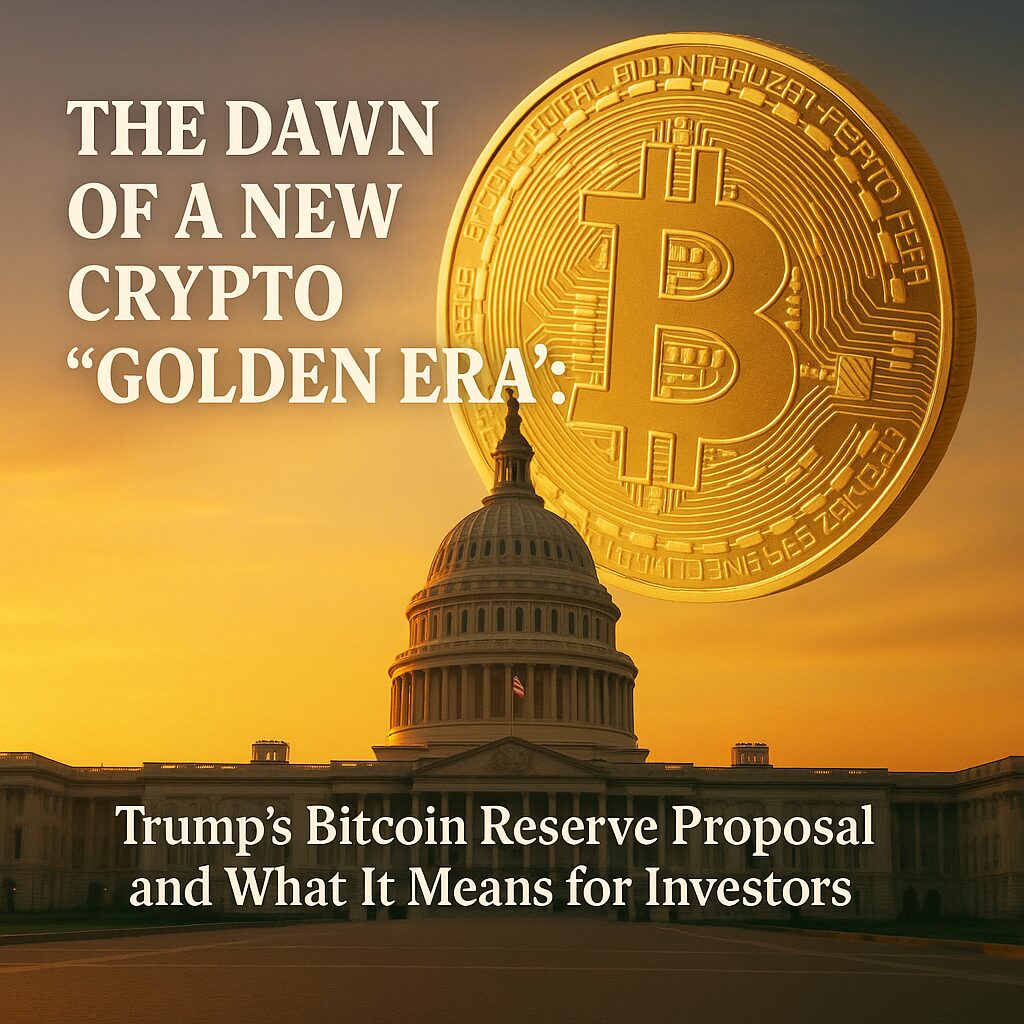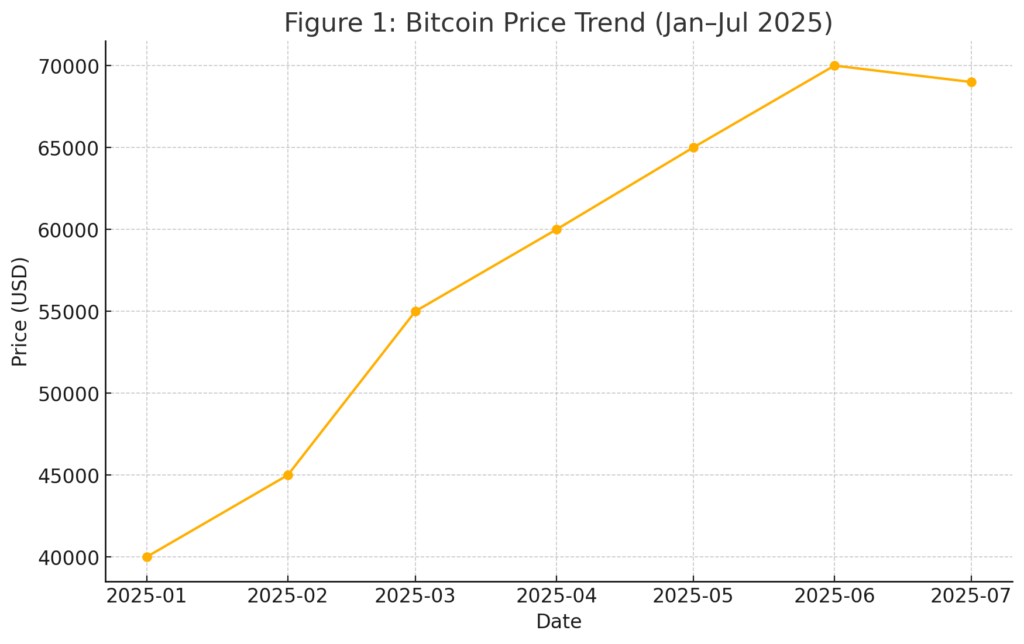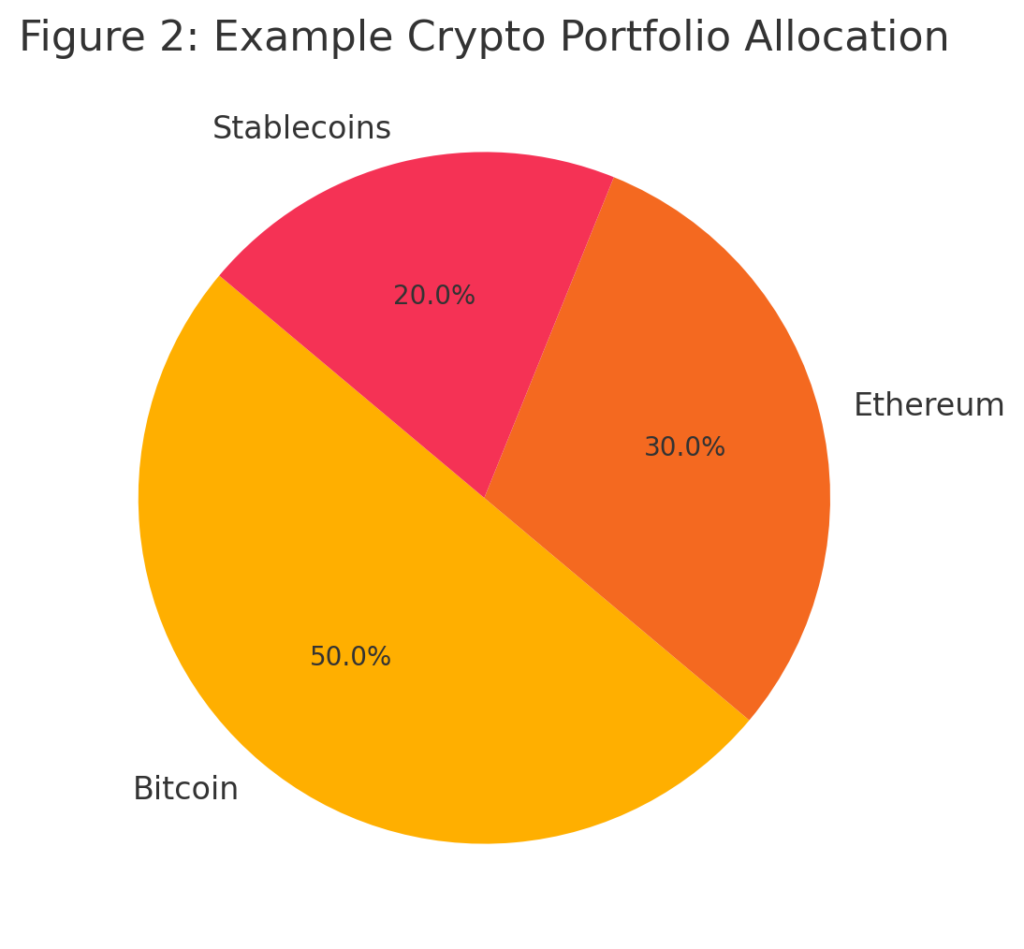
Main Points:
- Donald Trump’s surprising shift to a pro-crypto stance and his use of the term “Golden Era” for digital assets
- The concept of a U.S. government-held Bitcoin reserve and its potential implications
- How a national Bitcoin reserve could elevate crypto to a strategic asset class
- Key U.S. regulatory developments to watch, including Bitcoin ETF approvals and stablecoin legislation
- Strategic takeaways for Japanese investors: portfolio structure, risk management, and information-gathering
1. Trump’s Declaration of a “Crypto Golden Era” and the Bitcoin Reserve Plan
In late July 2025, former U.S. President and 2024/2028 presidential contender Donald Trump released a policy whitepaper that referred to cryptocurrencies entering a “Golden Era.” This marked a dramatic pivot from his earlier, often skeptical position on digital assets, surprising markets and crypto advocates alike. The whitepaper hinted at a bold proposal: the establishment of a national Bitcoin reserve, positioning Bitcoin alongside traditional monetary reserves like gold and foreign currencies.
Trump’s adoption of the term “Golden Era” signals a recognition that cryptocurrencies have matured beyond speculative tools. Over the past decade, Bitcoin has evolved into a widely recognized store of value, with institutional investors—pension funds, endowments, and corporations—increasing their allocations. In this context, a presidential candidate framing crypto as entering a Golden Era may influence the next administration’s policy priorities, potentially accelerating U.S. adoption and regulation of digital assets.
2. The Shockwaves of a National Bitcoin Reserve: Reimagining Monetary Strategy
A “Bitcoin reserve” held at the federal level would shatter centuries-old conventions of monetary policy. Traditional reserves—primarily gold bars stored in Fort Knox or sovereign foreign-exchange holdings—offer governments a buffer against currency fluctuations, inflation, and geopolitical risk. Bitcoin’s protocol-enforced scarcity (cap of 21 million coins) and decentralized governance could introduce anti-inflationary safeguards that gold cannot match.
If the U.S. Treasury were to purchase and hold Bitcoin, it could:
- Enhance credibility: A government-backed Bitcoin holding would signal trust, driving further institutional and retail adoption.
- Diversify risk: Adding a non-sovereign, non-correlated asset to reserves may hedge against dollar debasement and inflationary policy.
- Catalyze global competition: Other nations—China, the EU states, or emerging markets—might follow suit, igniting a race for digital-asset reserves.
The long-term effect could be monumental: Bitcoin’s perceived legitimacy would skyrocket, likely fueling a multi-trillion-dollar inflow into the entire crypto sector.
(Insert Figure 1 here)

3. What Japanese Investors Should Watch: Regulatory Trends and Portfolio Strategies
For Japanese investors scanning global markets for the next lucrative crypto opportunity, understanding U.S. regulatory signals is critical. The following developments deserve close attention:
- Bitcoin ETF Approvals
- The U.S. Securities and Exchange Commission (SEC) has been evaluating multiple spot Bitcoin ETF applications. Approval would open floodgates for retail and institutional capital, as ETFs simplify access to Bitcoin via traditional brokerage accounts.
- Stablecoin Legislation
- Congressional efforts to regulate stablecoins (e.g., a proposed “Stablecoin Transparency Act”) seek to impose reserve-asset requirements, audit standards, and consumer protections. Clear legislation could stabilize the market and spur innovation in payment-focused tokens.
- Tax and Custody Frameworks
- Ongoing discussions in Washington around digital-asset taxation and custody rules will shape compliance costs. Favorable definitions for qualified custodians could reduce barriers for Japanese crypto custodial services seeking U.S. partnerships.
Beyond regulation, Japanese investors must refine their portfolio approaches:
- Diversification: While Bitcoin (BTC) and Ethereum (ETH) capture the lion’s share of interest, allocating a portion to emerging layer-1 networks, DeFi protocols, and blockchain infrastructure tokens may offer outsized returns—albeit at higher risk.
- Risk Management: Use dollar-cost averaging (DCA) to mitigate volatility. Establish stop-loss levels and regularly rebalance allocations to maintain risk tolerance.
- Continuous Learning: Track regulatory updates from the SEC, CFTC, and Congressional committees. Leverage global news feeds, on-chain analytics, and expert commentary to stay ahead.
(Insert Figure 2 here)

Conclusion
Donald Trump’s unexpected embrace of a “Crypto Golden Era” and his proposal for a national Bitcoin reserve could herald a transformative shift in how governments view digital assets. Such a move would validate cryptocurrencies as strategic, sovereign-level instruments, likely driving global adoption, regulatory clarity, and massive capital inflows. For investors—especially in Japan—this is a clarion call to revisit portfolio frameworks, heighten vigilance on regulatory trajectories, and embrace blockchain’s evolving role in finance. As the world stands on the cusp of this potential paradigm shift, astute investors who combine disciplined strategy with agile information gathering will be best positioned to capitalize on the coming Golden Era of crypto.

